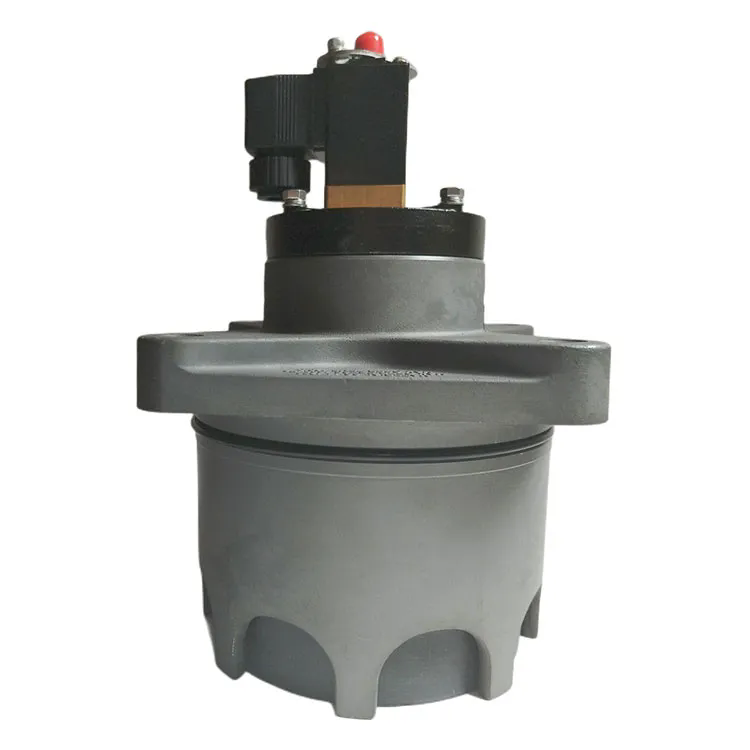What Makes a Pulse Valve Essential for Efficient System Operation?
2024-11-15
In a variety of industrial applications, precise control of air and gas flow is critical for optimal performance. Whether it's used in dust collection systems, automation processes, or water treatment facilities, the pulse valve plays a key role in maintaining efficiency and ensuring system reliability. But what makes a pulse valve essential for efficient system operation?
In this blog, we’ll dive into the importance of pulse valves, their functions, and why they are indispensable in many modern industrial systems.
What is a Pulse Valve?
A pulse valve is an essential component of systems designed for controlling the flow of gases or fluids. Most commonly used in compressed air systems, pulse valves are designed to deliver a burst or "pulse" of air at precise intervals, which is critical for processes such as dust collection, pneumatic actuators, and filter cleaning systems.
Unlike regular valves, which regulate the flow of fluid or gas continuously, pulse valves are triggered to open and close at specific moments, allowing a quick release of air or gas in controlled bursts. This pulse action is critical in systems where timing and pressure control are vital for maintaining smooth operations.
How Does a Pulse Valve Work?
Pulse valves operate through a solenoid actuator or pneumatic control, which directs the flow of air or gas when the system demands it. Here’s a simplified breakdown of the working mechanism:
1. Triggering the Valve: When the system needs a pulse of air, the solenoid sends an electrical signal to the valve, causing it to open.
2. Burst of Air: Once opened, the pulse valve releases a burst of compressed air or gas into the system, typically for cleaning or pressurizing a component.
3. Shutting the Valve: The valve quickly closes after the air burst is delivered, stopping the flow of air and preventing any continuous leakage.
This quick release and subsequent shutoff make pulse valves ideal for applications that require controlled bursts of air or gas.
Why is a Pulse Valve Essential in System Operation?
1. Efficient Dust Collection Systems
In industries like mining, cement production, and pharmaceutical manufacturing, fine particulate matter and dust can accumulate quickly, reducing the efficiency of equipment and presenting health and safety risks. To keep dust collection systems working at peak performance, pulse valves are used in reverse pulse jet cleaning systems.
- How it works: A pulse of compressed air is used to blow the collected dust off the filter elements in the dust collector. This process ensures that the filters don’t become clogged, maintaining optimal airflow and filtration efficiency.
Pulse valves deliver high-pressure bursts of air that shake off the accumulated dust, allowing the system to continue operating without losing suction power. This cleaning process is automatic and periodic, ensuring the dust collection system runs effectively and safely.
2. Improved Control in Pneumatic Systems
Pneumatic systems use compressed air to power machinery and tools. In these systems, pulse valves are used for precise control over the timing and flow of air, ensuring that machinery operates with the right pressure at the right time.
- How it works: Pulse valves regulate when and how much air enters specific parts of the system, allowing tools and equipment to perform repetitive tasks efficiently. In automated production lines or robotics, these precise bursts of air are necessary for actuating pistons, moving objects, or controlling robotic arms.
Without pulse valves, the system might either release too much air, causing waste, or fail to deliver enough air, leading to inefficiencies or equipment malfunction.
3. Pulse Cleaning of Filters and Heat Exchangers
For heat exchangers, air dryers, or filters used in various industrial systems, regular cleaning is necessary to prevent clogs that reduce performance. Pulse valves are used in systems designed to periodically clean these components, ensuring that air or fluids flow freely.
- How it works: Pulse valves trigger bursts of air that force dust or contaminants out of filters, keeping the system’s performance at optimal levels. For instance, in an air dryer used in compressed air systems, pulse valves will clear moisture build-up, preventing freeze-ups and ensuring the equipment continues to operate efficiently.
This type of maintenance cleaning extends the lifespan of filters, ensuring that systems remain reliable and productive over time.
4. Enhanced Energy Efficiency
Pulse valves play a role in enhancing energy efficiency in various systems, particularly those that rely on compressed air. By controlling the timing and frequency of air bursts, pulse valves help systems avoid wasting compressed air, which can be an expensive resource if used inefficiently.
- How it works: By providing air only when it’s needed, pulse valves prevent the continuous consumption of energy that would otherwise occur if a valve were left open. This results in energy savings, lower operating costs, and better overall system performance.
Energy efficiency is a key consideration in industries that rely heavily on compressed air systems, and pulse valves contribute significantly to this goal.
5. Precise and Reliable Operation
Pulse valves are built for precision. In industrial applications where timing, pressure, and flow control are critical, pulse valves offer a level of accuracy that ensures smooth operation without failure.
- How it works: Pulse valves are engineered to provide quick response times to the control signals, delivering the air burst exactly when it’s needed. This precision minimizes errors, delays, and inefficiencies in the system.
Whether in robotic assembly lines, packaging machinery, or welding automation, pulse valves ensure that the equipment performs in a controlled, repeatable manner, reducing errors and improving production consistency.
Common Applications of Pulse Valves
Pulse valves are found in a variety of industrial sectors and applications, including:
1. Dust Collection Systems: Used to clean and maintain filters in industries like mining, food production, and cement manufacturing.
2. Pneumatic Systems: Used in automated machinery, robotics, and assembly lines where controlled bursts of air are necessary for operation.
3. Industrial Cleaning Systems: Used to maintain clean heat exchangers, dryers, and filters in air conditioning and refrigeration systems.
4. Water Treatment Plants: Pulse valves can be used for processes such as backwashing filters and chemical dosing systems in water treatment facilities.
5. Spray Systems: Used in spray painting, coating, and misting systems where a controlled burst of air or fluid is required for precise applications.
Types of Pulse Valves
Pulse valves come in various configurations to suit different applications, including:
1. Diaphragm Pulse Valves: Commonly used in dust collection systems and other high-flow applications.
2. Poppet Pulse Valves: Known for handling high-pressure air and used in high-demand pneumatic systems.
3. Normally Closed Pulse Valves: These valves are typically closed when no signal is present and are activated only when needed.
4. Normally Open Pulse Valves: Remain open until triggered to close, often used in applications where continuous flow is required until an event occurs.
Conclusion
So, what makes a pulse valve essential for efficient system operation? The answer is simple: pulse valves are vital for ensuring precision, reducing energy waste, and maintaining system performance in a wide range of industrial applications. From dust collection systems to automated machinery, pulse valves regulate the flow of air or gas in bursts, making sure everything runs smoothly, efficiently, and safely.
When selecting pulse valves, it’s crucial to consider the specific needs of your system, including flow rate, pressure requirements, and operational environment. With the right pulse valve, you can improve system reliability, enhance energy efficiency, and ultimately extend the life of your equipment. In today’s fast-paced industrial landscape, having this level of control can be the difference between a well-oiled machine and costly system downtime.



